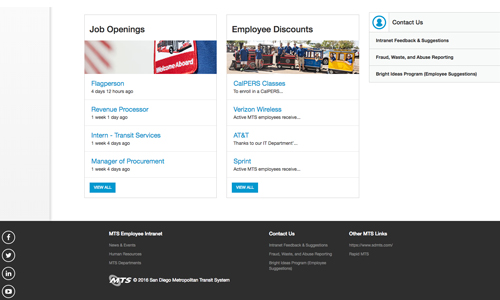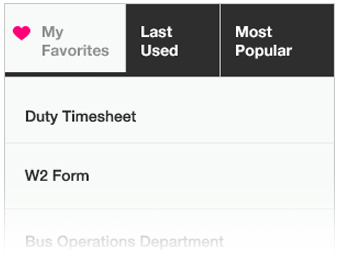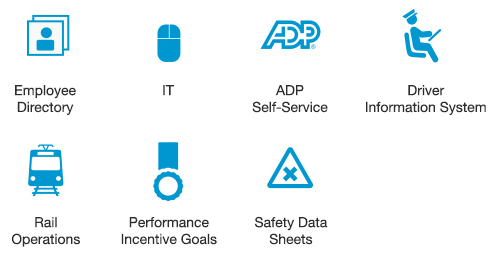You are here
Q & A with MTS Bus Chief and Maintenance Director
The MTS Bus operations and maintenance teams are hard at work on a number of issues. East County Operations will soon celebrate the grand opening of a new modern bus facility. We are also adding our voice to policy discussions at the state level about future mandates to add electric buses to transit fleets throughout California. And our team is testing new prototype low-emission bus engines on a few of our routes. We checked in with our Chief Operating Officer Bill Spraul and Director of Maintenance Julio Ortiz at MTS Bus to get the inside scoop on what’s going on. Here’s what they had to say:
What’s the latest construction update at the East County Bus Operations and Maintenance Facility in El Cajon?
Bill Spraul: The East County team will be moved in by late September. Everyone is excited to have a modern, state-of-the-art, efficient facility for Operations and Maintenance. But we have to make sure things are done right with the finishing touches. There are lots of important features to be installed, such as shop equipment, bus lifts, furniture, parts and inventory. This new facility will also allow us to operate CNG buses in East County for the first time, and new buses are already being delivered. The full project will be completed spring, 2017.
We’ve done a lot to cut tailpipe emissions at MTS through our Compressed Natural Gas program. Now the California Air Resources Board (CARB) may require transit operators to phase in electric buses. Can you explain what’s happening?
Bill Spraul: CARB is looking at ways to meet state climate goals, and requiring transit systems to purchase electric buses is on the discussion table. Our CEO Paul Jablonski has been leading efforts to educate CARB and its staff about the challenges, high costs and pitfalls of requiring transit systems to begin buying and operating an electric fleet. The costs are excessive and at this point forcing MTS to do so would require us to significantly reduce service for our passengers. We believe that our commitment to renewable natural gas and new “low NOx” engine technology is a better, quicker, and a much less costly strategy for reducing emissions and helping the state meet climate goals.
The cost of a battery electric bus vs. a CNG bus is about 60% more per bus. Electricity, as a fuel, is double the cost of CNG. As well, electric buses do not have nearly the daily range of a CNG bus. In fact, in a quick analysis of a couple of routes, we determined that we would need 25% more electric buses than CNG to operate the same level of service. We continue to work with CARB on this issue and share our position.
We are introducing a prototype bus engine that would help meet emissions goals. Can you explain what a “low NOx emission” bus engine is and the benefits?
Julio Ortiz: NOx stands for nitrogen oxide. It’s a family of gases that form when fuel is burned at high temperatures. It’s emitted by buses, autos, trucks and non-road vehicles such as bulldozers. It’s an unavoidable by-product that adds emissions to the environment. A company called Cummins Westport has created a near-zero NOx natural gas engine for buses and we are a test-bed for it. We have a total of six in service since last July and they perform as well as the other engines.
Bill Spraul: Low NOx bus engines could be a more efficient solution to achieve the same goal as electric buses. The emissions will be 90% lower than the current EPA NOx limit and meet federal greenhouse gas emission requirements.

 Employee Directory
Employee Directory IT Help Desk
IT Help Desk ADP Self-Service
ADP Self-Service Driver Information System
Driver Information System Bus Operations
Bus Operations Rail Operations
Rail Operations Performance Incentive Program
Performance Incentive Program Safety Data Sheets
Safety Data Sheets




